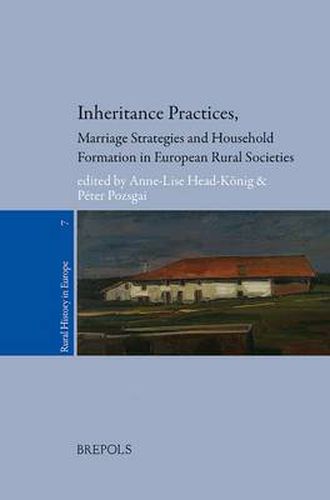Readings Newsletter
Become a Readings Member to make your shopping experience even easier.
Sign in or sign up for free!
You’re not far away from qualifying for FREE standard shipping within Australia
You’ve qualified for FREE standard shipping within Australia
The cart is loading…






Conventional wisdom holds that, over a long period of history, many women and men in the countryside were prevented from marrying because they lacked access to land. This volume offers an up-to-date discussion of the interaction between inheritance practices, marriage and household formation both for those who inherited and those who did not. It asks why and to what extent inheritance patterns and household structures differed between countries and regions in Europe right up to the present day. Dealing with bothimpartible and partible inheritance, it examines how retirement practices and choices between ante-mortem or post-mortem property transfers gave rise to a wide range ofspecific strategies. The chapters cover rural Europe from the seventeenth to the twentieth century, ranging from semi-subsistence and seignorial societies to highly market-oriented economies. They offer case studies drawn from the Iberian Peninsula to Scandinavia and from the British Isles to Russia.
$9.00 standard shipping within Australia
FREE standard shipping within Australia for orders over $100.00
Express & International shipping calculated at checkout
Conventional wisdom holds that, over a long period of history, many women and men in the countryside were prevented from marrying because they lacked access to land. This volume offers an up-to-date discussion of the interaction between inheritance practices, marriage and household formation both for those who inherited and those who did not. It asks why and to what extent inheritance patterns and household structures differed between countries and regions in Europe right up to the present day. Dealing with bothimpartible and partible inheritance, it examines how retirement practices and choices between ante-mortem or post-mortem property transfers gave rise to a wide range ofspecific strategies. The chapters cover rural Europe from the seventeenth to the twentieth century, ranging from semi-subsistence and seignorial societies to highly market-oriented economies. They offer case studies drawn from the Iberian Peninsula to Scandinavia and from the British Isles to Russia.